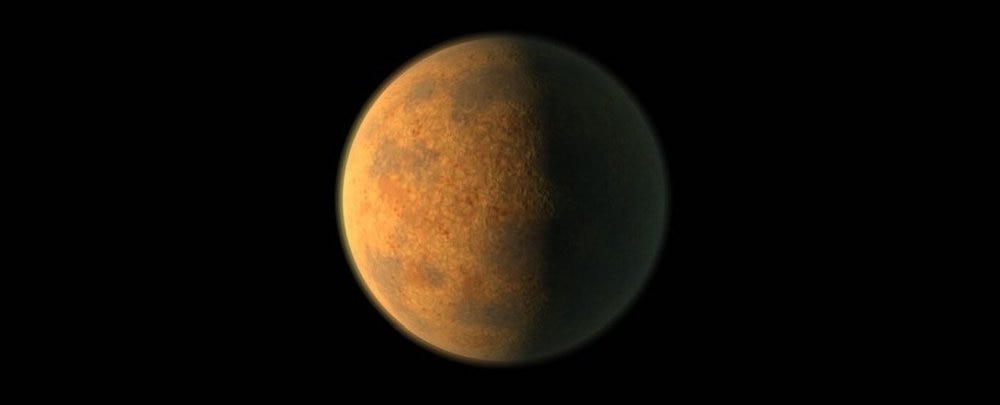Create a free profile to get unlimited access to exclusive videos, sweepstakes, and more!
Bizarre, brittle exoplanets could feel like walking on alien eggshells
Exoplanets with an extremely thin and brittle lithosphere (crust and upper mantle) might exist out there.

Where do you even begin when trying to figure out the possible types of exoplanets out there that we may have not even discovered yet?
Tatooines with two suns do exist, an Arrakis might be somewhere, and there are exoplanets stranger than fiction, where it rains molten iron and gets hot enough to ionize human bone. Now scientists hypothesize another strange type of exoplanet might exist out there. This species of planet would have an extremely thin and brittle lithosphere — its crust and upper mantle — with no plate tectonics, meaning it’s probably not the place you’d expect to find aliens.
Planetary geologist Paul Byrne of Washington University in St. Louis, who recently led a study published in JGR Planets, used existing knowledge to create models that might be telling us what is waiting to be found. We don’t yet have a telescope strong enough to be able to see straight through an exoplanet’s atmosphere to its surface. The most likely characteristics to be found in space were factored into the models that created this easily cracked world.
“We needed to use educated guesses for what the right parameters for our models should be, based on our understanding of how rocks behave on Earth, including lab settings,” Byrne told SYFY WIRE. “That's because we really don't know very much about the geology of exoplanets.”
We can only assume that exoplanets may be something like the planets and moons found in the solar system, and that could be really close or way off depending on where in space you happen to be looking. Exoplanets can be detected when they transit in front of a star and dim that star’s light temporarily (even that isn’t completely reliable because some are too small to have an effect on a huge star’s light). After creating thousands of models and figuring out what must exist where, Byrne and his research team noticed these peculiar brittle planets in one region.
But why did the lithospheres of such planets end up being so thin that they could possibly crack underfoot? Not like they would be close enough to send astronauts to if they do exist, but Byrne thinks there are several reasons for this. It turned out to be surface temperature that was the culprit behind lithospheric thickness. Out of every potential reason that an exoplanet could be so brittle, including mass and heat flow from the inner depths to the crust, it was surface temperature that had the most influence. A hotter surface means a more brittle lithosphere.
“There are numerous reasons a planet might have a very thin brittle layer, with the single biggest reason being high surface temperature, but when you have a geologically young world, with a hot interior and vigorous interior activity, that helps,” Byrne said.
The reason eggshell worlds would be devoid of plate tectonics is still unknown. While they may not be absolutely necessary to support life everywhere, they are still viewed as an important factor for determining a planet’s habitability. When plates slide around and trigger volcanic eruptions, enormous amounts of gases are unleashed. Carbon dioxide is later re-absorbed from the atmosphere when things cool down. If these two processes stay in balance, they keep atmospheric CO2 levels at a level that allows for a temperate climate where life can thrive.
Earth most likely has plate tectonics because its outer layer, though somewhat brittle, is thick enough for long stretches of it to hold their shape but not too thick to keep it from bending. It is also at the right level of thickness to subduct and set off volcanoes. Hypothetical eggshell planets were also found to be too hot for surface water. Maybe there is some form of life as we don’t know it that needs no water, or something like a tardigrade that can at least go without it for much longer than we can. However, water is still viewed as necessary for life as we know it.
“If we can prove these worlds exist, we’ll be better equipped to understand how plate tectonics come to be,” said Byrne. “We can then search for planets where we think such particular combinations of factors might be present, as prospective worlds that might be habitable.”

























